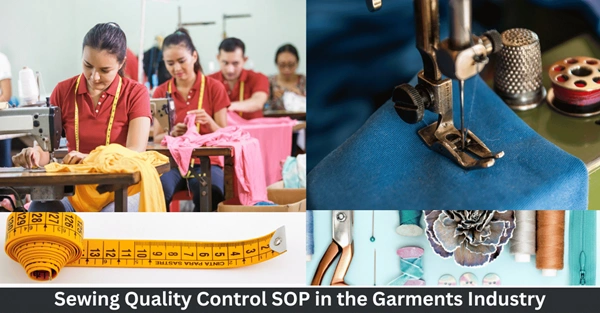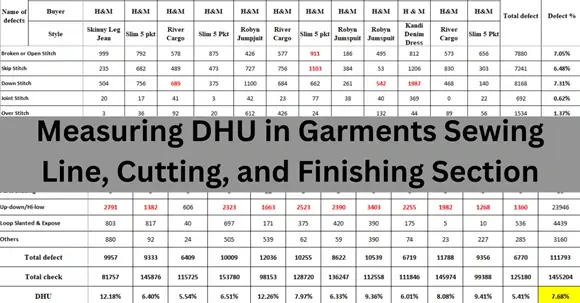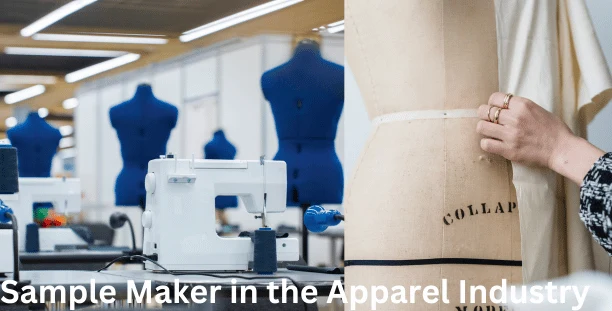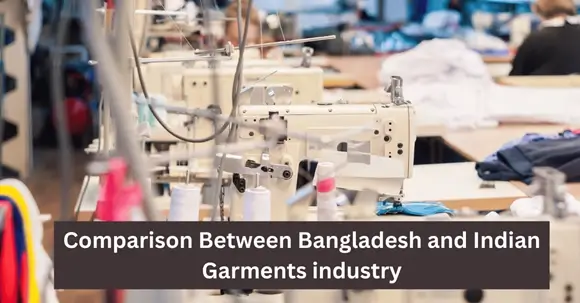Sewing Quality Control SOP in the Garments Industry
Sewing Quality Control SOP in the Garments Industry
To ensure all garments produced meet specified quality standards by systematically monitoring and controlling the sewing process. This Sewing Quality Control SOP applies to all sewing operations within the garments production unit, covering operators, quality inspectors, and supervisors. In this article, we explain Sewing Quality Control SOP in the Garments Industry.

Sewing Quality Control SOP in the Garments Industry
Here’s a comprehensive Sewing Quality Control SOP for the garments industry below:
| Serial | Process | Activities | |
| 1 | Plan Receive | 1. Find out the line loading plan. 2. Make risk assessment plan and distribute to team. 3. Do Size-set/initial/PS-GS submission probable plan. | |
| 2 | Collect approved sample and review with tech-pack | 1. Style review (Go through each and every point) 2. Identify the deviation between sample and tech pack. Find out the solution after discussion with DQE and RQS. 3.Any discrimination found report to RQS and take update if more query to further contact with Merchant 4. Ensure team understanding about tech-pack and approve sample comments. | |
| 3 | Initial risk assessment | 1. Find out product risk and take necessary steps. 2. Check measurement deviation with sample vs spec and take necessary steps 3. Find out any risk of non-sewing and sewing items. | |
| 4 | Check approved main fabric swatch with bulk | 1. Check main fabric face back approval 2. Check fabric color approval 3. Check shrinkage group 4. Find out fabric defect and take corrective action | |
| 5 | Check approved auxiliary fabric swatch with bulk | 1. Check auxiliary fabric face back approval 2. Check fabric color approval 3. Check shrinkage group 4. Find out fabric defect and take corrective action | |
| 6 | Check approved Sewing trim card/accessories with bulk a) Measureable b) Piece | 1. Check sewing accessories with approve trim card and BOM 2. Findout the Measureable and non-measureable iteam; have to cehck with BOM sheet. 3. Any descripancies will discuss with DQE, RQS, Merchandiser | |
| 7 | Check approved finishing trim card/accessories with bulk a) Measureable b) Piece | 1. Check finishing accessories with approve trim card and BOM sheet. 2. Findout the Measureable and non-measureable iteam; have to cehck with BOM sheet 3. Any descripancies will discuss with DQE, RQS, Merchandiser | |
| 8 | Check approved packing trim card/accessories with bulk a) Measureable b) Piece | 1. Check packing accessories with approve trim card and BOM 2. Findout the Measureable and non-measureable iteam; have to cehck with BOM sheet 3. Any descripancies will discuss with DQE, RQS, Merchandiser | |
| 9 | Check approval swatch of non-sewing iteams with bulk | 1. Check approval of cutting marker and fusing data sheet. 2. Check approval of embroidery, printing and heat seal logo, wash, fusing with tack pack | |
| 10 | Check Pattern & Marker | 1. Check pattern for measurement and shape. 2. Check marker based fabric inspection advise. | |
| 11 | Size set review and find out the risk | 1. Product safety risk assessment. 2. Review style stitching with the approve sample and tack pack. 3. Identify the critical process. 4. Make mock up and training to the process owner. 5.Tool or equipment assurance like finish pattern, folder, Machine TPI (Light, medium, heavy). 6. Coordination with Technician, L/C, Supervisor, QI, QC. 7. Measurement and if any discrefencies advise pattern amendment | |
| 12 | Finalize the risk assessment and find out the root cause after discussion with DQE and RQS | 1. Product risk assessment based on size set. 2. Fixed process owner and trained to them 3. Mock up assurance in process 4. Sewing related equipment preparation like -Necessary folder, Guide, Machine TPI (Teeth per inch), LMH (Light medium heavy) | |
| 13 | Product safety | 1. Sharp tools control procedure. 2. Assure metal pass process maintaining properly 3. Required lab test report check 4. Pin-setting SOP follow up 5. Pull test SOP follow up 6. Assure insect free of all areas. 7. Needle/ Broken needle transparent SOP follow up 8. Mold prevention SOP follow up | |
| 14 | 1. Individual department wise risk analysis discussion. 2. Fabric/Accessories in-house confirmation and it’s inspection update. 3. Ensure machine & Mock-up preparation. 4. Review the risk of product safety 5. Review PP comments 6. Review Buyer special comments (If any) | ||
| 15 | Initial cutting | 1. Check pattern and marker with previous pattern. 2. Review sample about print, embroidery, Fusing templet placement and others quality issues. 3. Find out the cutting defect and action taken. | |
| 16 | Analysis 1st output with risk assessment | 1. 1st output review with sample, tech pack, trim card and buyer comments (If any) 2.Check layout right man in right process by following risk assessment. 3. Assure process mock up and critical process high light (Using flag) 4. Ensure TLS functionality.. 5. Ensure 10 data card functionality. | |
| 17 | Initial/PS/GS Preparation | 1.Ensure required size & color is cut for initial/ pilot run & PS-GS. 2 .Make understand the line management about label control procedure. 3. Key point measurement assure in quality check point. 4. SOP follow up on down/heat seal/seam sealing. 5. Fitting & component functionality check. 6. Before submit sample review by floor management 7. Take RQS guide line for any confusion. | |
| 18 | Find out the defects in the cutting process and the action taken | 1. Fabric approve swatch check with bulk 2. Check shrinkage and pattern group 3. Lay height check and confirm lay SOP OK 4. Find out the panel inspection defect and resolve 5. Numbering and bundling process follow up 6. Find out the none sewing defect and resolve. 7. Review the report and take action based on findings. | |
| 19 | Find out the defects in sewing process and action taken | 1. Daily Style review and resolve the findings if any discrefencies betwin approve sample & tech pack. 2. Day sewing inline and resolve the findings. 3. All report accuracy must be confirm by line management. 4. Assure trims are attached as per sample and tech-pack requirement 5. In-process check and report. 6. TLS follow up and report 7. 10 data card functionality check and report. 8.DHU follow up and analysis. 9. Weak performer evaluation and training as necessary. 10. Take necessary steps on as per buyer and buyer representative findings 10. Shipment schedule follow-up | |
| 20 | Find out the defects in finishing process and action taken | 1. Shipment schedule follow up 2. Daily Style review and resolve findings if any discrefencies between approve sample & tech pack. 3. Day finishing inline and resolve the findings. 4. Review sample and trims card with tech pack also confirmation of all required accessories 5. Product audit by auditor as per audit SOP. 6. Take necessary steps on as per buyer and buyer representative findings. 7. Collect and hang Iron, trims/accessories and shade approval sample as per requirements. 8. Assure process quality and measurement. 9. Fitting and component check with the buyer requirement. | |
| 21 | Find out the defects in packing process and action taken | 1. Shipment schedule follow up 2. Daily Style review and resolve findings if any discrefencies be twin approve sample & tech pack. 3. Day sewing inline and resolve the findings. 4. Review sample and trims card with tech pack also confirmation of all required accessories 5. Product audit by auditor as per audit SOP. 6. Take necessary steps on as per buyer and buyer representative findings. 7. Collect and hang Folding approval sample as per requirements. | |
| 22 | Shipment | 1. Inspection schedule follow-up. 2. Organize Pre-final & final inspection. 3. Make sure 100% re-check and re-pack correctly if any consignment fail. 4. Lot wise packing audit 5. Assure all accessories are attached properly. 6. Carton measurement and sticker are used properly. | |
| 23 | Non-confirmation goods reconciliation | 1. Reconciliation on Order quantity, cut quantity, Sewing quantity, Finishing rcv quantity, Pack quantity and ship quantity. 2. RQS, QM, PM, FM and TM jointly review the defctive goods daily basis and finalized non-confirmance goods. 3. RCR receive the declared non-confirmance goods and maintain rehgister |



